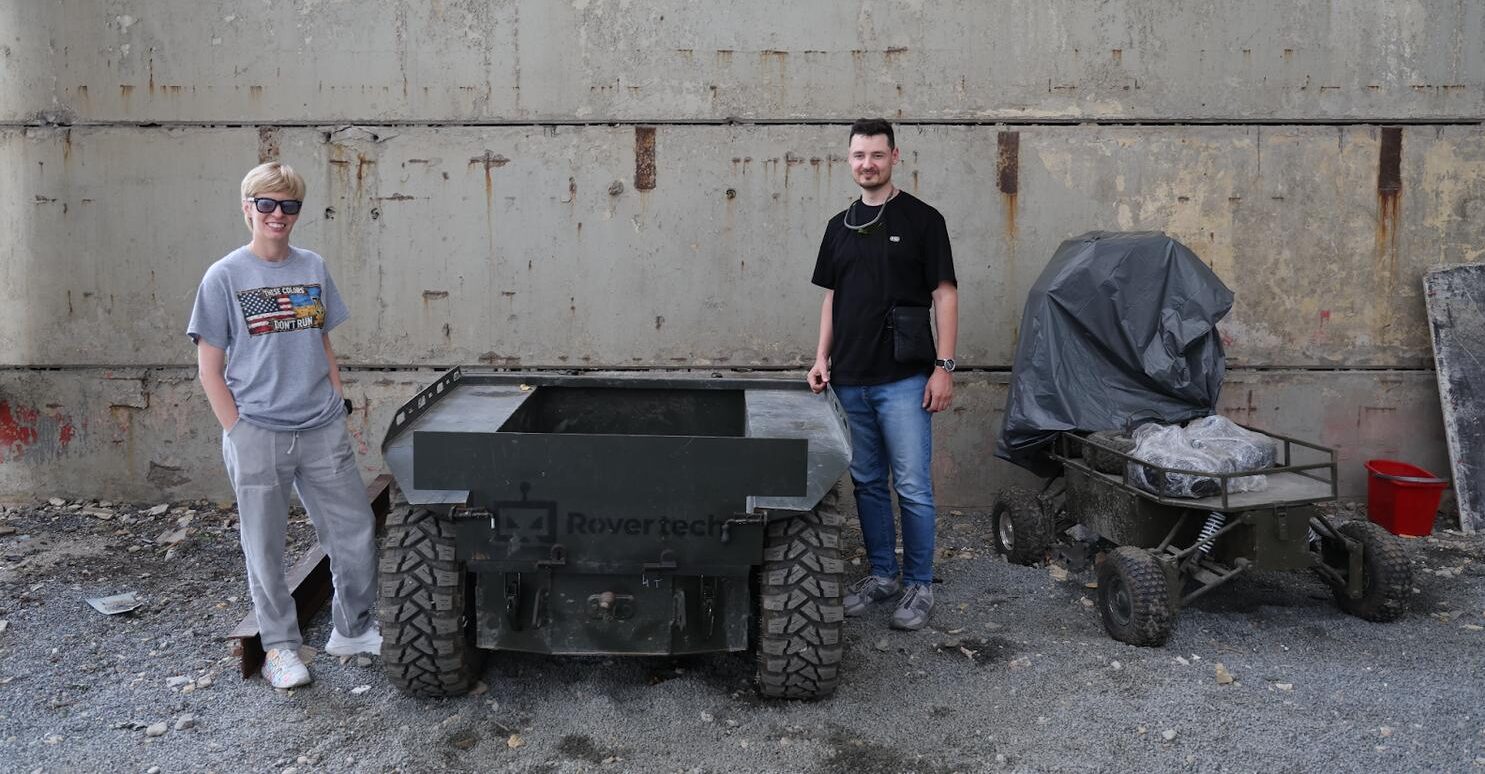Ukraine’s AI drones have 18 months to outpace Russia in existential “ruthless swarm” race
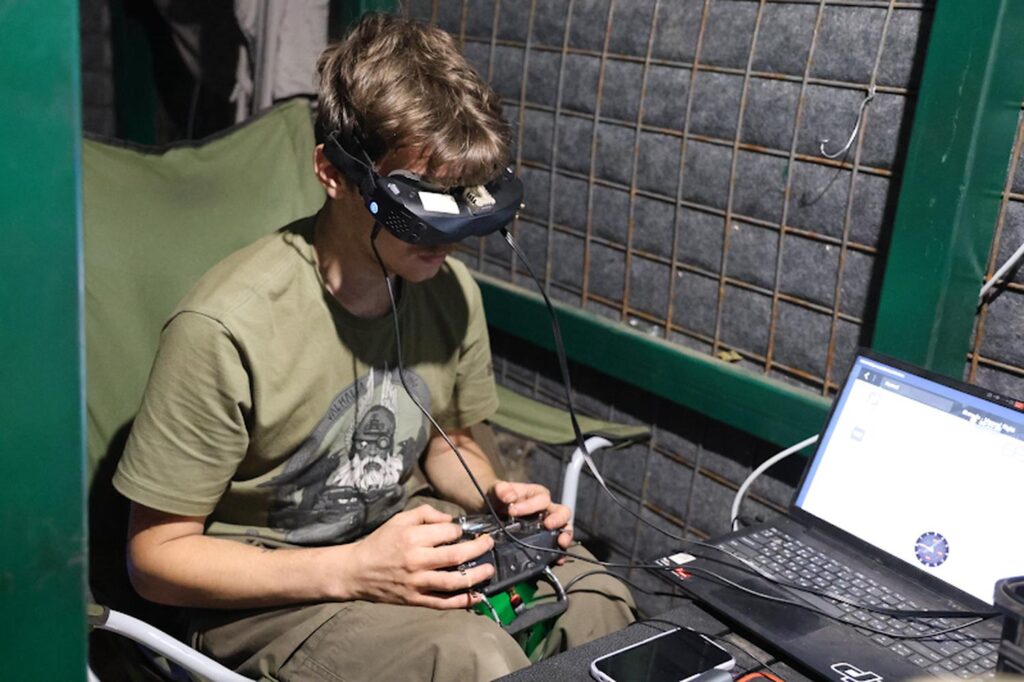
Ukraine has less than two years to master AI-powered drone warfare before autonomous weapons transform the battlefield into something “totally ruthless,” warns former Commander-in-Chief Valerii Zaluzhnyi.
The stakes couldn’t be higher. By 2027, Zaluzhnyi predicts, “human involvement will be fully or partially removed not only from the process of control, but also from decision-making about target engagement.”
Whichever side masters autonomous warfare first may gain a decisive advantage that determines the war’s outcome.
But Ukraine’s AI drones currently struggle with the basics—they can’t reliably hit moving targets.
The Russo-Ukrainian War has become a race for technological supremacy. Few expected Ukraine to mount such fierce resistance. Western intelligence agencies initially predicted that Kyiv would fall within days of Russia’s full-scale invasion.
Yet, the war is in its fourth year and has evolved into a grinding war of attrition. Even Russia, a far larger power, now finds itself locked in a technological battle with Ukraine.
For Kyiv, staying ahead technologically wherever possible is essential to fighting back. Ukraine’s demographic and economic constraints make this technological edge a matter of survival, not preference.
As Zaluzhnyi bluntly stated, Ukraine “currently lacks the human and economic resources for a large-scale war” and must rely on technology to compensate for Russia’s numerical advantages.
But the technology isn’t ready yet.
“We are already working on the concept that in the near future there will be no connection between the pilot and UAV on the front line,” said Max Makarchuk, Head of AI at Brave1, Ukraine’s government defense technology accelerator.
But there’s a problem: Makarchuk says the percentage of UAVs hitting their targets is constantly decreasing.
From hobby shop to battlefield centerpiece
At the outset, Ukrainian soldiers relied on off-the-shelf drones. Civilian drone hobbyists began assisting with drone operations, while volunteers trained troops to stream drone footage via Google Meet to observe the battlefield in real time.
Timeline of the Ukraine-Russia drone war
- 2022: Off-the-shelf civilian drones adapted for military use
- 2023: Electronic warfare systems deployed to counter drone effectiveness
- 2024: Russia introduces fiber-optic drones to bypass jamming
- 2025: Both sides racing to develop autonomous AI-powered systems
These first-person view (FPV) drones could be deployed virtually anywhere and gradually evolved into the centerpiece of battlefield operations. Fighting without drones became unthinkable, and every technical detail began to matter in improving their performance.
“We are attempting to create a killzone of 20 kilometers,” said Andrii, known as Murphy, from the 419th Battalion of Unmanned Systems.
As drone usage continued to scale, electronic warfare systems were increasingly deployed to counter drone effectiveness.
By 2024, Russia began fielding fiber optic drones to bypass jamming – eventually using them to retake most of the Ukrainian-occupied territory in Kursk Oblast after Ukraine’s August incursion.
Fiber optics allow the pilot to maintain a connection to the drone even in the presence of jamming.
Russia and Ukraine race to achieve drone AI breakthrough
Both Russia and Ukraine are rushing to deploy AI capabilities in warfare.
Ukraine benefits from sharing data with Western partners, which provides opportunities to train autonomous weapon systems slated for frontline use.
Both sides also gain an advantage from access to vast, unique datasets that can be used to train AI models.
Drone pilot Bohdan, known by the callsign Bandera and serving in the Unmanned Systems Battalion of Ukraine’s 110th Separate Mechanized Brigade named after Marko Bezruchko, expects fiber-optic drones to become more prevalent in the coming year.
Bohdan’s unit has tested using AI targeting systems, but said “it’s still raw, unfinished tech.”
“It doesn’t handle moving targets well, like a vehicle driving through uneven terrain,” said Bohdan.
Vitaliy Goncharuk, CEO of A19Lab and former Chairman of the Artificial Intelligence Committee of Ukraine, offered a similar perspective from the industry side.
“When it comes to drones in Ukraine, the industry has largely focused on solving the ‘last mile targeting’ problem for FPV drones,” he said.
“At the same time, Russia took a simpler approach: they attached fiber optics to drones and scaled that solution. Fiber optics turned out to be far more effective than AI-based targeting, which often failed to handle edge cases,” said Goncharuk.
As Goncharuk observed, “I believe the impact of AI systems directly on the battlefield in the Ukraine-Russia war will unfortunately remain minimal for Ukraine. Russia, on the other hand, is actively investing in this space, with the necessary budget and qualified personnel.”
Ukraine’s Defense Intelligence chief Kyrylo Budanov recently said AI is currently most useful for processing massive data sets, helping analysts sift through “millions of gigabytes” of information that would otherwise be unmanageable.
He noted that while elements like target correction are appearing in drones, true AI-driven weapons remain limited, though he expects real combat robots within the next decade.
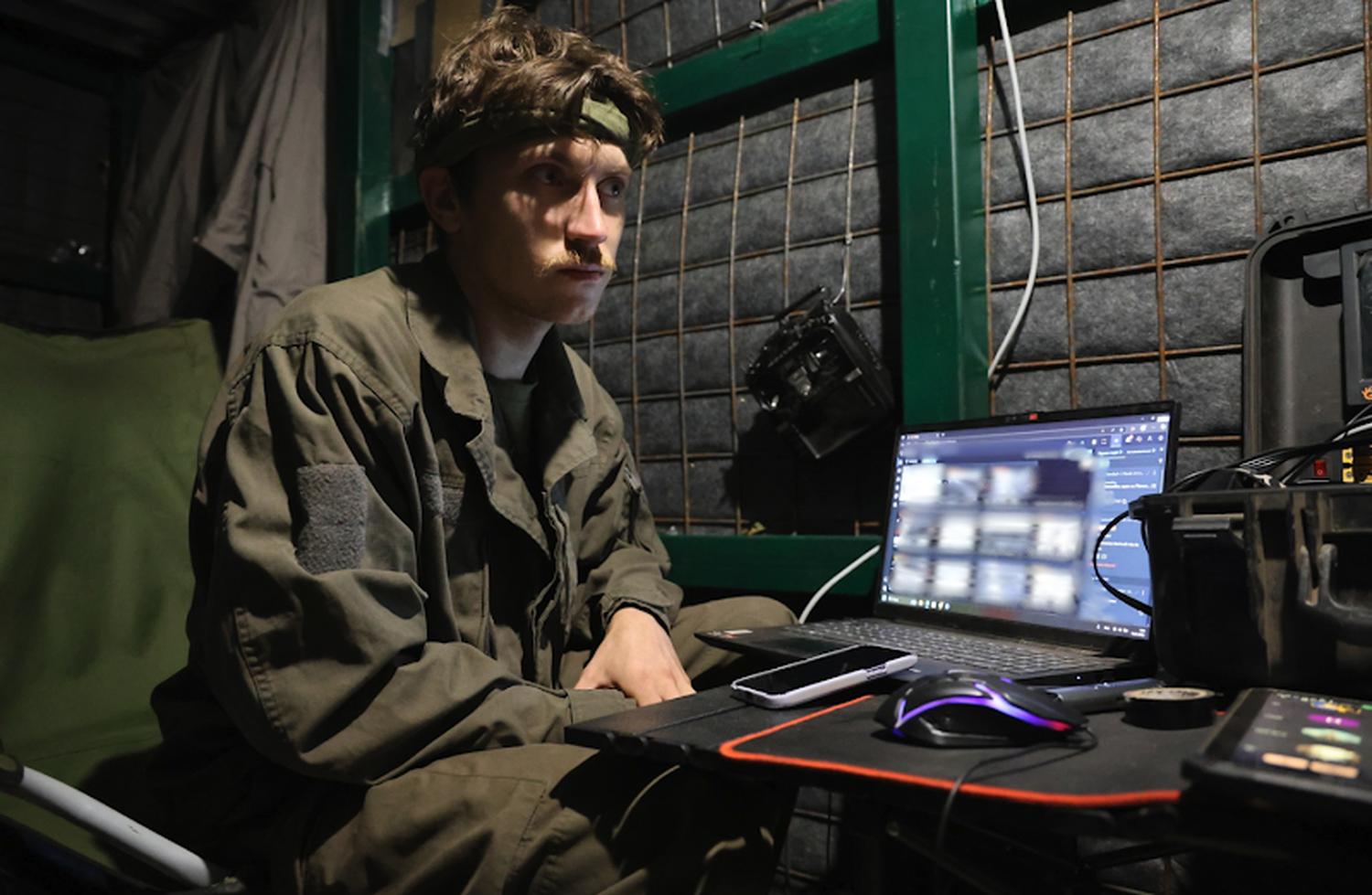
Meanwhile, both sides have been racing to develop autonomous drones that can resist jamming and enhance targeting.
The long-term goal is to deploy swarms of autonomous drones to overwhelm enemy positions, but building this technology has proven to be far more challenging than anticipated.
Still, Ukrainian forces have already conducted over a hundred swarm missions with Swarmer software, which allows groups of drones to decide which strikes first and adapt if one fails. Even small-scale autonomous teaming, experts note, is an impressive step forward on the battlefield.
The window for solving these problems is narrowing rapidly. Zaluzhnyi warns that whichever side achieves breakthrough AI capabilities first may gain an insurmountable advantage in the autonomous warfare era beginning around 2027.
“Artificial intelligence will gradually replace UAV operators with remote controls in many operations,” said Andriy Kovalenko, Deputy Head of Ukraine’s Center for Countering Disinformation.
The scale advantage could be dramatic: while human pilots struggle to operate more than five drones simultaneously, AI systems could potentially control hundreds.
Where AI actually works today
In Kyiv’s recent Spiderweb Operation in early June, AI-enabled drones were used. The AI used to support the drones were “mainly to stabilize the drone in flight and support the operator,” said Lyuba Shipovich, CEO of Dignitas, which leads the Victory Drones project.
“It ensures smooth navigation and precision over long distances. The AI isn’t making decisions about targets, it’s optimizing the flight path and maintaining control under difficult conditions.”
Shipovich explained that AI-enabled targeting is most effective for mid- to long-range strikes, typically 40-120 kilometers, where the targets are fixed and high-value, such as jamming stations, radar systems, or air defenses.
These deeper strikes carry less risk of friendly fire and don’t require the precision needed for frontline use, where AI is generally avoided.
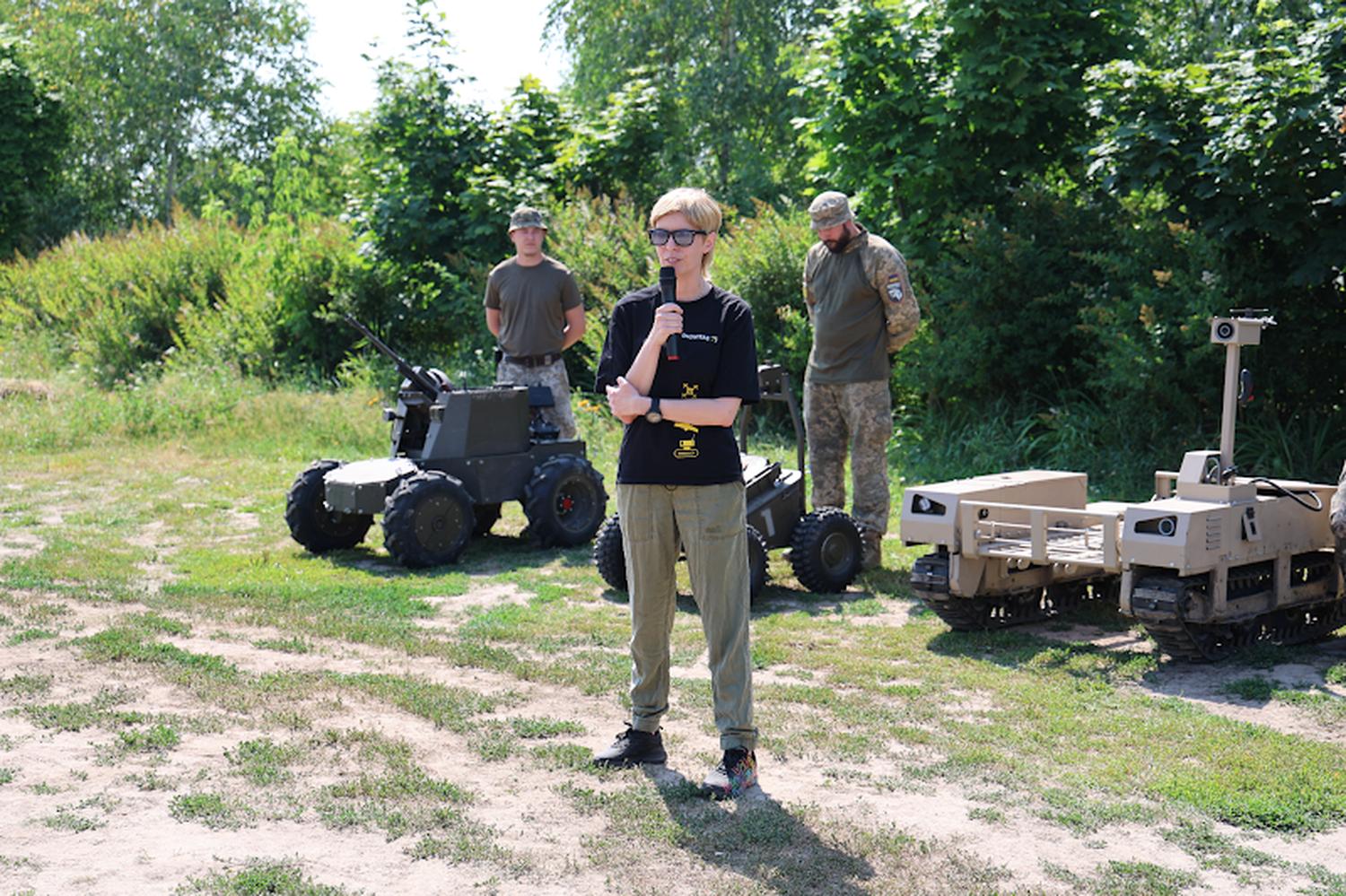
Where AI for drones works best right now:
- Mid- to long-range strikes (40-120 km): Fixed, high-value targets like jamming stations, radar systems, or air defenses
- Deep strikes: Less risk of friendly fire, don’t require frontline precision
- Flight stabilization: Maintaining control over long distances in difficult conditions
- Navigation assistance: Path optimization and course correction
However, setbacks have slowed adoption. Some developers rushed to develop AI-assisted targeting for drones with bad performance, and once soldiers paid for these upgrades and saw their poor performance, few wanted to continue paying the additional costs.
AI models require a constant flow of new data to remain effective and continuously improve. Yet countermeasures are always possible.
For example, if a drone interceptor trained on Russian UAVs initially succeeds, Russia could adapt by altering flight patterns or programming drones to swerve when they detect incoming threats, thereby undermining the AI’s targeting assumptions. Hardware is another obstacle.
When attachments carry steep price tags, drone pilots often decide it’s more practical to buy a new drone outright than to spend on upgrades.
Inside Ukraine’s AI development efforts
One company at the forefront of this push is Twist Robotics. Its CEO, Viktor Sakharchuk, stated in an interview,
“Ukraine was the first to widely use small FPV drones with guidance systems. Russia also seems to be developing similar technologies and is preparing to scale their use.”
Since 2022, Twist has developed AI training pipelines aimed at bringing autonomous drones to the front line. Sakharchuk noted that there are three main components of autonomous drones with AI:
- visual navigation
- visual detection and tracking,
- trajectory planning.
Each component is trained separately.
The firm relies on a mix of real and synthetic data to train visual AI systems, starting with photorealistic simulation and refining in live trials. “The simulator developed by our company is also widely used for generating synthetic data,” he added.
“The training process for autonomous drones begins in simulation, where we use Obriy, our in-house developed software with a photorealistic environment. Once the models are trained in simulation, they are fine-tuned on real drones and customized for specific models.”
Rostyslav Olenchyn, executive director of Twist Robotics added that navigation is critical to ensure the drone reaches its target area. “We’re dealing with a triad: AI detection and targeting, AI navigation, and communication,” said Olenchyn.
The economics of AI targeting are becoming clearer. Makarchuk estimated that installing simple AI targeting systems costs about $150 per drone—a relatively modest investment if the technology actually works reliably.

Sakharchuk emphasized that no AI system can be successfully deployed on the battlefield without direct interaction with end users and frontline experience. “They all have limitations and application features that are not obvious without training,” he noted.
The March-to-June 2024 timeline reveals how quickly AI adoption can reverse when performance fails to meet battlefield requirements—a concerning precedent given the approaching 2027 deadline for autonomous warfare dominance.
In March 2024, Sakharchuk highlighted that Ukraine saw the first large-scale use of AI-guided drones. But by June, interest sharply declined. A company had entered the market selling cheap, do-it-yourself kits and software, without offering any training.
While the low price appealed to some units, the systems underperformed due to poor configuration and lack of user understanding.
“When a large number of low-quality systems hit the market, the military saw that the guidance didn’t work. Therefore, interest disappeared,” Sakharchuk explained.
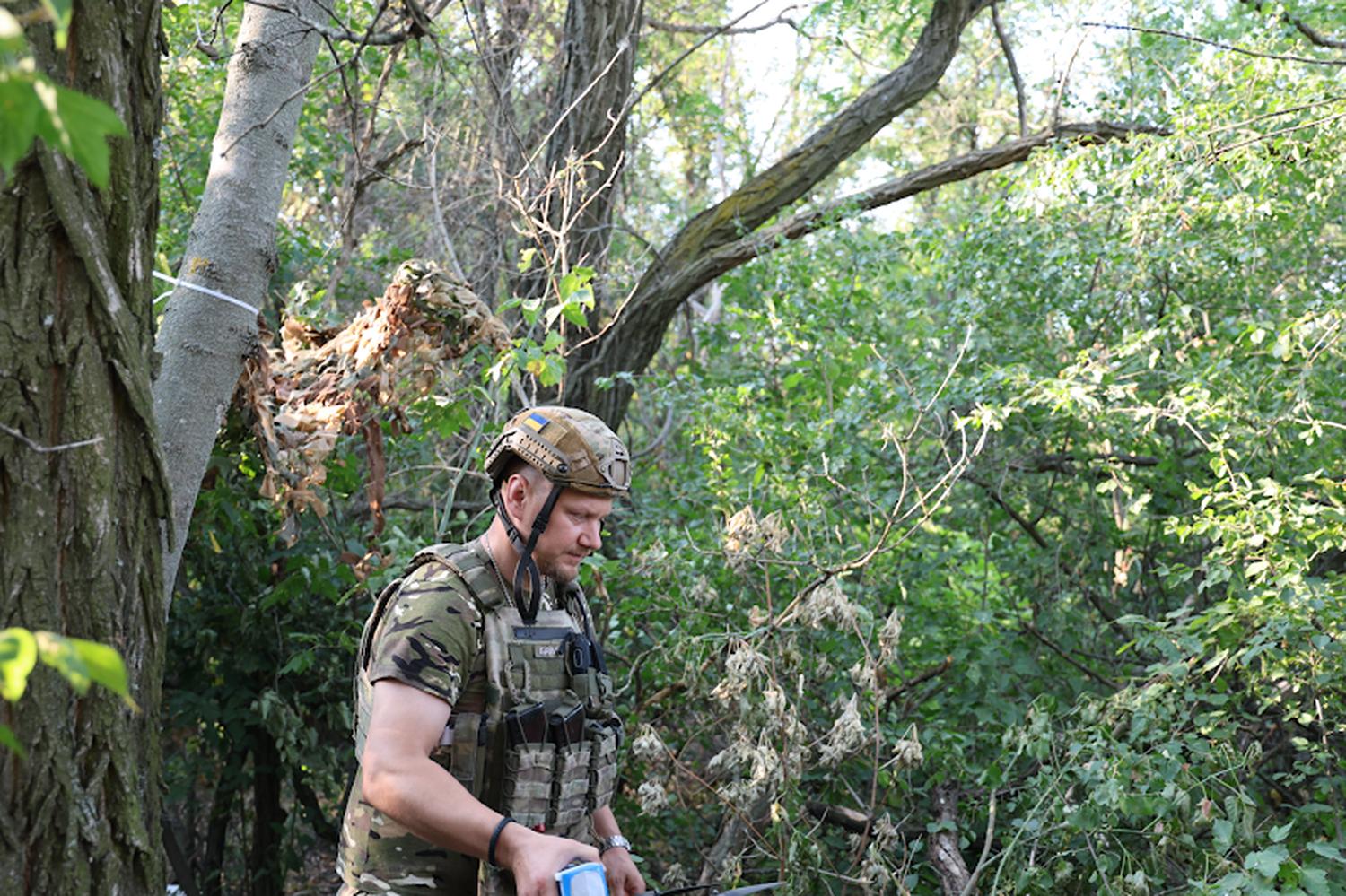
Battlefield performance challenges
Although the race for AI dominance has slowed, battlefield realities dictate priorities.
For Ukraine, AI is only one element of a broader strategy. With fiber-optic networks now spread across the front, ground robots are increasingly taking over frontline roles.
To expand their functions, AI will be crucial, enabling robots to act not only as combat systems but also as “mechanical medics,” reducing casualties while giving Ukraine a tactical edge.
Both sides are pressing ahead with AI development, and some progress is already visible on the battlefield. As one Twist Robotics engineer remarked in 2023, AI-enabled FPV drones are “a poor man’s Javelin.”
Meanwhile, Russia is also evolving its capabilities. Russia is now deploying loitering kamikaze drones equipped with AI and machine learning, allowing them to identify military vehicles on highways and evade interceptor drones.
AI-enabled FPV drones are “a poor man’s Javelin.”
Twist Robotics engineer
Recently observed flying in a group of six with distinct wing markings, these drones may be testing swarm coordination, and each carries a large amount of onboard computing power and a 4G modem.
The parallel development suggests both sides understand the strategic importance of AI mastery, but the question remains which will achieve breakthrough capabilities first.
International companies are also jumping into Ukraine’s AI drone market. Czech company LPP Holding has delivered hundreds of AI-powered drones that operate without satellite connection.
“They say we are the first to prove that something like visual navigation can work,” said company co-owner Radim Petrash.
However, cheap tech won’t always be the only solution; more sophisticated technologies will need to be developed. Maria Berlinska, head of the Air Intelligence Support Center, issued a clear warning,
“We’re trying to keep up with low-tech solutions, but cheap, simple technologies are only part of the answer. We need to leap to a qualitatively new level.”
Machine vision is no game changer—yet
Despite early hopes, machine vision has not yet become a game-changing feature on Ukraine’s battlefield FPV drones.
While the technology allows drones to identify and strike targets autonomously, even without pilot contact, its real-world performance has been mixed due to challenges like poor camera quality, difficulty hitting moving targets, and inconsistent software performance.
Heorhii Volkov, commander of the drone unit Yasni Ochi (“Clear Eyes”) of the 13th Khartiia Brigade, noted that AI-assisted targeting often fails in environments like forests, where trees can confuse the AI, and puddles reflecting metallic colors can be misidentified as vehicles.
In one recent operation in Kharkiv Oblast, his team spotted Russian soldiers briefly emerging from a treeline and deployed long-range drones equipped with AI targeting to strike a concealed vehicle. However, the AI was only activated after the initial hit.
In practice, Volkov noted, these systems are most useful when a target is already burning and clearly visible.
“It’s still learning, the technology isn’t ready yet,” he added.

Ukrainian developers continue refining these systems, but military operators often prefer more reliable alternatives like fiber-optic drones, which are better suited to handle jamming and terrain obstacles.
The scalability challenge
In the future, battlefield capabilities will scale dramatically once AI swarms are deployed.
Deploying 700 autonomous interceptors offers far greater scalability than coordinating 700 human pilots. For Ukraine, confronting a larger opponent, leveraging asymmetrical warfare through technologies like AI is essential to offset Russia’s conventional superiority.
“We don’t have as many human resources as Russia, they fight, they die, they send more people, they don’t care, but that’s not how we see war,” said Alex Bornyakov, Ukraine’s deputy minister of digital transformation. “I see this as the future of conflict.”
The state of AI in drone warfare in Ukraine
- Over 100 companies in Ukraine working on guidance systems
- Several companies already testing drone swarms
- Limited deployment of widespread swarm technology
Over 100 companies in Ukraine are working on guidance systems, with several already testing drone swarms, but widespread deployment remains limited.
“Swarms of drones are an advanced technology that will allow the military to stay not one, but several steps ahead of the enemy,” said Herman Smetanin, Minister of Strategic Industries.
Swarmer CEO Serhii Kupriienko said, “I really believe drone swarming is the next big thing, or not even the next—it’s the current big thing.”
Some soldiers have said that AI-targeting struggles in certain terrain, such as hills and forests, and works best on flat, open ground.
Still, developers like Twist Robotics are working daily to solve these battlefield challenges, aiming to give Ukrainian forces a technological edge.
The 2027 deadline approaches
The race against time is intensifying. As Zaluzhnyi warned, Ukraine faces a critical window: perfect AI warfare capabilities before 2027, or potentially face “totally ruthless” autonomous weapons controlled by adversaries who solved the technological puzzle first.
Kyiv’s technological edge is being driven by volunteer groups that function more like agile software teams than traditional defense contractors. Organizations like Dignitas treat development as a rapid feedback loop, constantly communicating with frontline soldiers to refine and iterate on new tools.
But while volunteers can innovate quickly, staying ahead in the technology race will eventually require greater state support and sustained investment.
The era of autonomous drones may not be fully here yet – but its time will come, especially as Ukraine embraces a “robots first” military strategy.
Whether Ukraine can master these technologies before the 2027 autonomous warfare deadline may determine not only its tactical edge but also set the next stage of the war.

